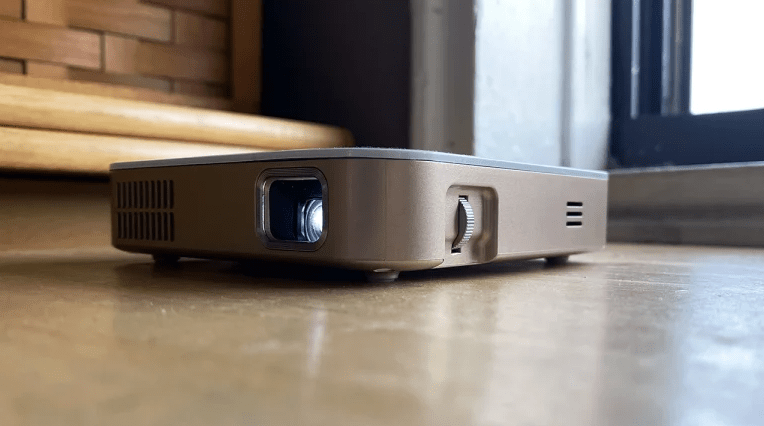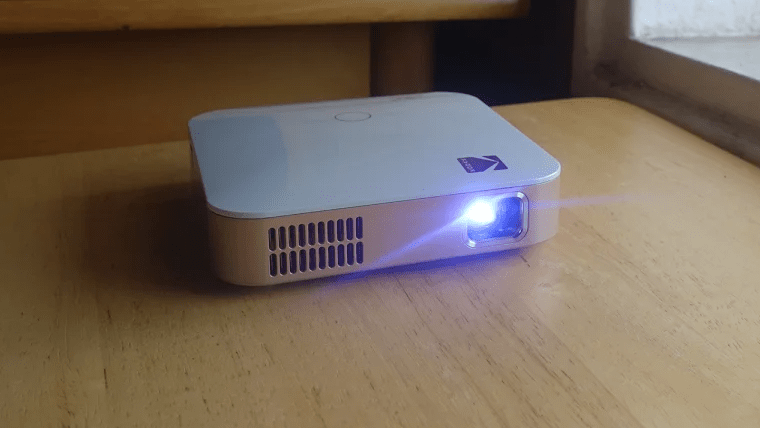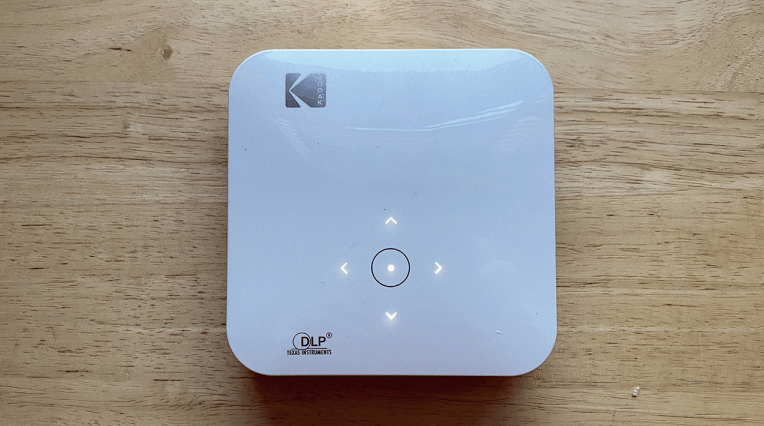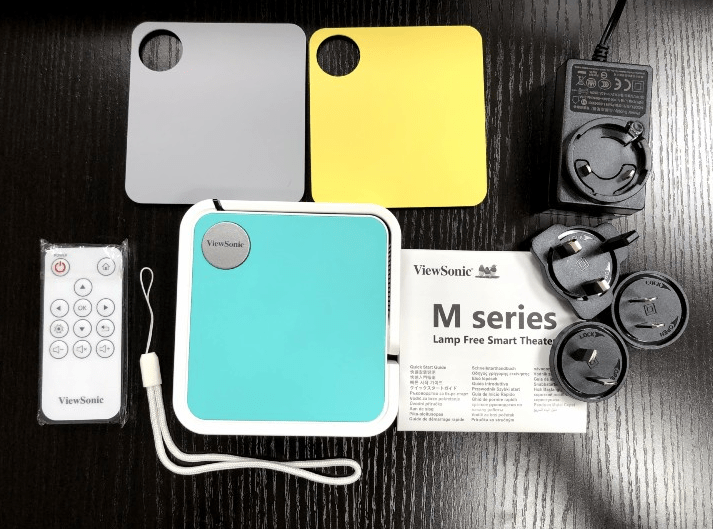At gagadget.com, your trust is our priority. We follow strict quality standards in our research, tests, and analysis of video projectors, to give you the best experience. Learn more
Viewsonic M1 Mini Plus vs Kodak Luma 350: Comparison
Hey everyone, Jim's here. Today, I'm comparing two ultra-portable LED projectors that put big-screen entertainment right in your pocket: the ViewSonic M1 Mini Plus and the Kodak Luma 350. Both models pack a surprising amount of features into a sub-1-pound package, including built-in batteries, onboard media players, and wireless connectivity. But there are some key differences in brightness, resolution, and smarts that could make one a better fit for your on-the-go viewing needs.
I've spent time personally testing both the M1 Mini Plus and Luma 350, evaluating image quality, ease of use, streaming performance, and overall value. In this in-depth comparison, I'll share my hands-on experience to help you decide which pint-sized projector delivers the biggest bang for your buck. Let's dive in!
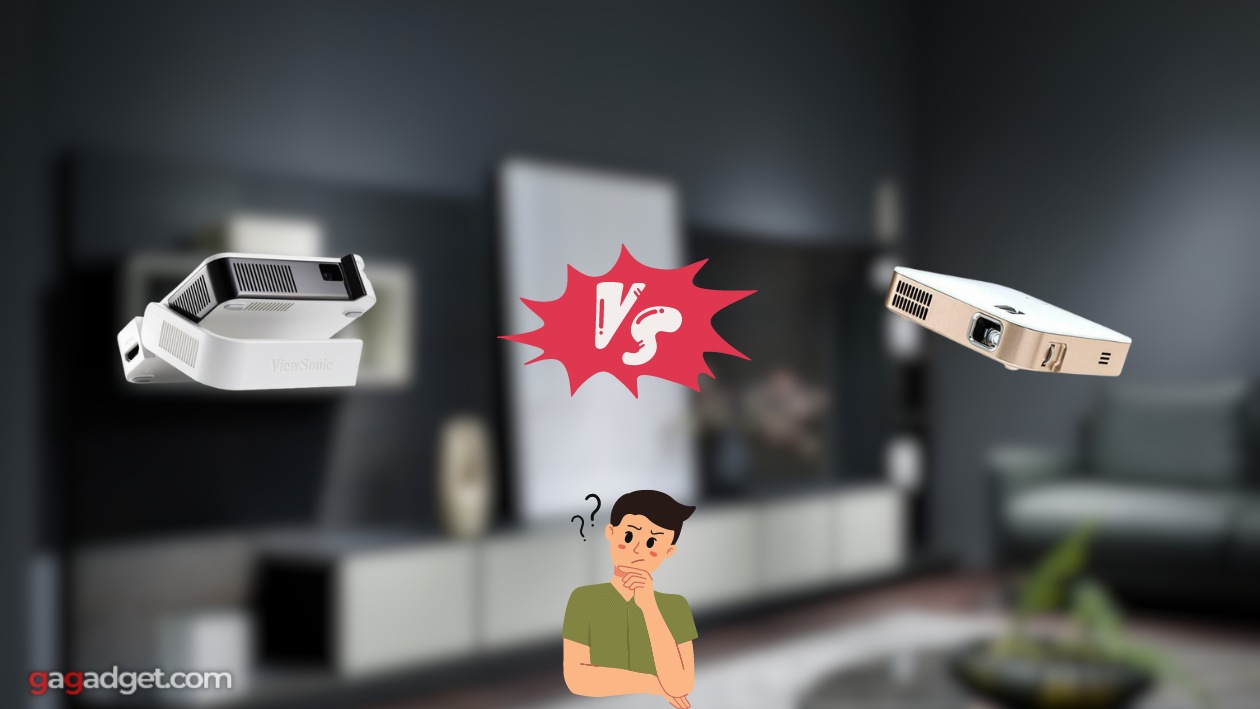
ViewSonic M1 Mini Plus vs Kodak Luma 350: Quick Overview
I respect your time and aim to provide only the essential information, skipping the fluff.
If you're in a hurry, here's my quick take: The ViewSonic M1 Mini Plus and Kodak Luma 350 are very closely matched ultra-portable projectors. Both feature WVGA (854x480) resolution, LED light sources, built-in batteries, and compact sub-1-pound designs you can easily slip in a pocket or purse. The main differences are brightness, with the Luma 350 rated at 150 ANSI lumens vs the M1 Mini Plus's 50 ANSI lumens, and contrast, which the ViewSonic claims at 120,000:1 vs 3,500:1 on the Kodak.
For most buyers, I give the slight edge to the Kodak Luma 350. The extra brightness makes a noticeable difference in image vibrancy and combats ambient light better, while the Android OS offers more robust streaming options. But if you value maximum portability and battery life over brightness, the ViewSonic M1 Mini Plus is an excellent alternative in an even slimmer package.
Table of Contents
- ViewSonic M1 Mini Plus vs Kodak Luma 350: Full Comparison
- Kodak Luma 350 vs ViewSonic M1 Mini Plus: Design
- Luma 350 or M1 Mini Plus: Owner Reviews
- ViewSonic M1 Mini Plus and Kodak Luma 350 Alternatives
- Which Portable Projector is Better for You, ViewSonic M1 Mini Plus or Kodak Luma 350?
ViewSonic M1 Mini Plus vs Kodak Luma 350: Full Comparison
| Specs | ViewSonic M1 Mini Plus | Kodak Luma 350 |
| Image |
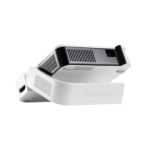
|
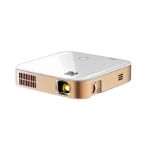
|
| ANSI Lumens | 50 | 150 |
| Resolution | 854 x 480 (WVGA) | 854 x 480 (WVGA) |
| Contrast Ratio | 120,000:1 | 3,500:1 |
| Display Type | 0.2" DLP | DLP |
| Light Source | LED | LED |
| Light Source Life | 30,000 hours | 20,000 / 30,000 hours (Eco) |
| Battery Life | 2 hours | 2 hours |
| Throw Ratio | 1.2 | Not specified |
| Image Size | 24" - 100" | 17" - 100" |
| Digital Keystone | Vertical | No |
| Onboard Storage | 5GB | 1GB RAM / 8GB ROM |
| App Store | Aptoide | Android |
| Wireless Mirroring | No | Miracast |
| 3D Support | Yes | No |
| Integrated Speakers | 2 x 1W | 1 x 3W |
| Dimensions (W x D x H) | 4.3" x 3.9" x 1.2" | 4.4" x 4.4" x 1.1" |
| Weight | 0.7 lbs | 0.9 lbs |
| Ports | HDMI, USB-C, 3.5mm headphone | HDMI, USB, 3.5mm headphone |
| Release Year | 2020 | 2019 |
The first thing I noticed when unboxing the ViewSonic M1 Mini Plus and Kodak Luma 350 was their palm-sized portability. Both measure around 4 inches square and 1 inch thick, easily slipping into a pocket, purse, or pack for impromptu movie nights or presentations on the go. The M1 Mini Plus is a hair lighter at 0.7 pounds vs the Luma 350's 0.9 pounds, but you'd be hard-pressed to feel the difference.
When it comes to image quality, the Kodak Luma 350 has a clear edge in brightness. At 150 ANSI lumens, it throws a noticeably punchier, more vibrant picture than the M1 Mini Plus's 50 lumens. In a dim to moderately lit room, the Kodak maintains better color saturation and contrast, especially at screen sizes over 60 inches. The ViewSonic's 120,000:1 dynamic contrast ratio sounds impressive on paper but didn't make a huge real-world difference in my side-by-side tests.
That said, both projectors have their limits due to the 854x480 WVGA resolution. That's a quarter of 1080p, so fine details like text and distant objects look noticeably soft, especially compared to the HD videos and games we're used to on our TVs and phones. But for casual movie viewing and photo slideshows, I found the image quality acceptable given the ultra-compact form factor.
Both projectors use an efficient LED light source rated for 30,000 hours, so you won't have to worry about premature dimming or expensive lamp replacements. The M1 Mini Plus has a slight throw ratio advantage at 1.2 vs the Luma 350's unspecified ratio, meaning it can cast a given image size from a bit further back. But the difference is minor at typical viewing distances under 10 feet.
The Luma 350 claws back some points with its Android-based smart TV interface. With a quad-core processor, 1GB of RAM, and 8GB of storage, it runs streaming apps like Netflix and YouTube directly without an external media player. The experience isn't as snappy as a Roku or Fire Stick, but it's serviceable for a self-contained projector. It also supports Miracast screen mirroring from compatible devices.
The M1 Mini Plus has a more limited Aptoide app store with a smaller selection of streaming services. But it partly makes up for this with a bigger 5GB of internal storage for sideloading media files, as well as 3D compatibility (active DLP-link glasses required). Both projectors have HDMI and USB ports for connecting external sources plus 3.5mm audio jacks and built-in speakers for sound.
Battery life is identical at 2 hours, enough for an average-length movie or a few episodes. The M1 Mini Plus has a slight edge in charging flexibility, with USB-C and compatibility with external power banks. The Luma 350 relies on a proprietary charger. But both will keep you entertained for a reasonable stretch away from an outlet.
Ultimately, the choice between the ViewSonic M1 Mini Plus and Kodak Luma 350 comes down to priorities. If you value maximum brightness for the best possible picture in ambient light, go with the Luma 350. Its superior punch and integrated Android streaming give it an edge for all-in-one portable entertainment.
But if you prioritize the slimmest, lightest form factor above all else, the M1 Mini Plus won't disappoint. What it lacks in outright lumens it partially makes up for in contrast, and the ability to power it from an external battery pack is great for camping and outdoor use. It's the projector I'd grab for an overnight trip where space is at a premium.
Kodak Luma 350 vs ViewSonic M1 Mini Plus: Design
Both projectors also have adjustable kickstands built into the chassis, allowing you to angle the image up without an external tripod. The M1 Mini Plus's kickstand rotates a full 360 degrees for more flexible positioning, while the Luma 350's has a more limited range. But both make tabletop setup a breeze.
Kodak Luma 350 Design
ViewSonic M1 Mini Plus Design
The M1 Mini Plus and Luma 350 are very close in size and weight, with the ViewSonic measuring 4.3" x 3.9" x 1.2" and 0.7 pounds and the Kodak at 4.4" x 4.4" x 1.1" and 0.9 pounds. Both feature rounded rectangular shapes with the lens offset to one side and onboard controls on top. The Kodak has a more prominent silver bezel while the ViewSonic keeps things minimal in all charcoal gray.
For such tiny projectors, connectivity is good on both. The M1 Mini Plus features an HDMI port, USB-C for data and charging, and a 3.5mm headphone jack. The Luma 350 swaps the USB-C for a standard USB-A and adds a separate power input. But the core options are the same, allowing you to connect a streaming stick, gaming console, or external speaker.
Luma 350 or M1 Mini Plus: Owner Reviews
Let's see what actual buyers have to say about their experiences with the Kodak Luma 350 and ViewSonic M1 Mini Plus projectors:
Kodak Luma 350 Owner Reviews:
Praises: "I'm incredibly impressed by the brightness and color this little projector puts out. In a dark room it's like having a 100 inch TV I can fit in my pocket!"
"The Android OS is surprisingly usable for casual Netflix and YouTube sessions. Not as responsive as my Nvidia Shield but more than adequate for a self-contained projector."
***
Drawbacks: "The resolution is definitely a step down from true HD. Text and fine details look soft and small objects tend to shimmer."
"The onboard speaker is fairly weak and tinny. It's fine for a small room but plan on using an external Bluetooth speaker for the best experience."
ViewSonic M1 Mini Plus Owner Reviews:
Praises: "This projector is insanely portable - it's smaller than some battery packs I own. Perfect for slipping in a jacket pocket for movie nights with friends."
"I love being able to power it from my USB power bank. We streamed two full movies on a camping trip with the projector running off a cheap 10,000 mAh battery."
***
Drawbacks: "50 lumens is pretty dim, even in a completely dark room. The image looks washed out and low contrast unless you keep the screen size under 60 inches or so."
"The Aptoide app store is honestly kind of a mess. Many apps are outdated or refuse to install. I'd much rather use an Amazon Fire Stick for streaming."
Overall, owners of both projectors seem happy with their purchases given the tempered expectations of the under-$400 pocket projector category. Kodak Luma 350 buyers frequently praise the high brightness and punchy color for the size, with several calling out the Android streaming interface as a handy bonus. Complaints center around the low resolution and weak audio.
ViewSonic M1 Mini Plus reviewers love the extremely compact, pocket-friendly form factor and ability to run it off an external battery pack. Powering it from common USB power banks seems to be a popular application. But many wish for higher brightness, especially when projecting larger than 60 inch screen sizes. The limited Aptoide app selection is another common sticking point.
From my own testing, I think both sets of reviews accurately reflect the strengths and limitations of these tiny projectors. The Luma 350's high brightness and integrated Android TV are great for casual streaming, while the M1 Mini Plus is the champ of sleek portability and flexible power options. As long as you don't expect true home theater performance, both deliver impressive images and features for their palm-sized designs.
ViewSonic M1 Mini Plus and Kodak Luma 350 Alternatives
If you're not completely sold on either the ViewSonic M1 Mini Plus or Kodak Luma 350, here are a couple other popular pocket projectors to consider:
- Anker Nebula Apollo: Another 200 ANSI lumen DLP model with Android OS, internal apps, automatic keystone, and a 2-hour battery at an affordable price;
- AAXA S2: A slightly larger option with a brighter 400 LED lumens, 720p native resolution, and 2 hours of battery life. But no built-in apps.
The Anker Nebula Apollo is very similar to the Kodak Luma 350 in core specs and features. You get the same 854x480 resolution, 200 ANSI lumens, Android OS for streaming, and a compact size. But it adds automatic keystone correction and costs slightly less, making it a good value alternative.
For a brightness and resolution upgrade, check out the AAXA S2. Its 400 LED lumens are noticeably bolder than the M1 Mini Plus or Luma 350, and the 1280x720 native resolution is a big step up in clarity. You lose the built-in apps and fully pocketable size, but for pure image quality per cubic inch, it's an excellent choice.
Which Portable Projector is Better for You, ViewSonic M1 Mini Plus or Kodak Luma 350?
After thorough hands-on testing, I can confidently say that both the ViewSonic M1 Mini Plus vs Kodak Luma 350 deliver impressive performance and convenience for their ultra-compact size. Whichever model you choose, you're getting an all-in-one entertainment solution that fits in your pocket - a technological feat that still feels a bit magical to me.
For most buyers, I recommend the Kodak Luma 350. The 150 ANSI lumen brightness outperforms the competition in this size class, producing a bold, colorful picture even with moderate ambient light. The Android OS is also a big plus, giving you access to popular streaming apps without the need for an external media player. It's the pocket projector I'd grab for casual movie nights and impromptu presentations.
That said, the ViewSonic M1 Mini Plus remains a compelling option for those who prioritize the absolute smallest, lightest form factor. It's a marvel of miniaturization and the ability to power it from cheap USB-C batteries adds valuable flexibility for traveling and outdoor use. Just be prepared for a dimmer picture, especially at screen sizes above 60 inches.
Ultimately, both projectors are a testament to how far pico technology has come in the past few years. While no substitute for a full-sized home theater projector, they pack an impressive A/V punch for devices that fit in the palm of your hand. If you temper your expectations and choose based on your top viewing priorities, I think you'll be pleasantly surprised by their portability and performance.
Let me know if you have any other questions as you shop for your ideal pocket projector. I'm always happy to help you navigate the pros and cons. Thanks for reading and enjoy your big screen adventures, wherever they take you!
Go Deeper:
